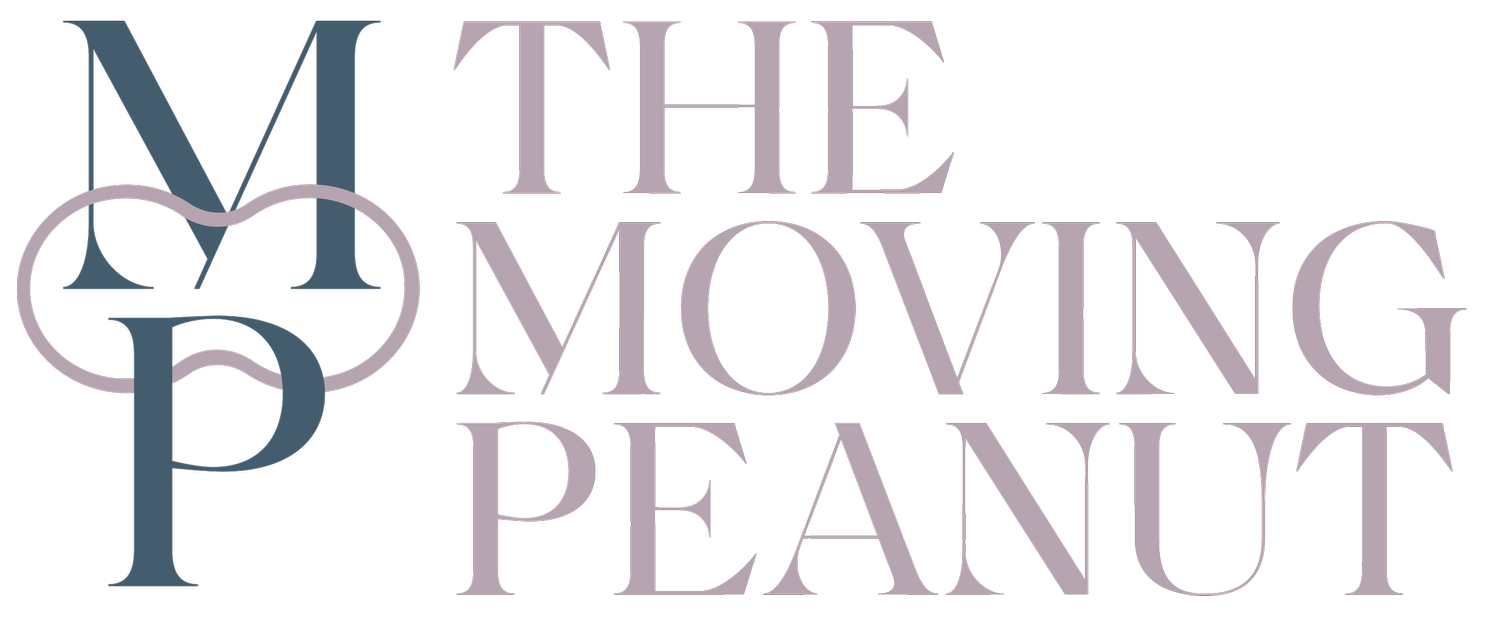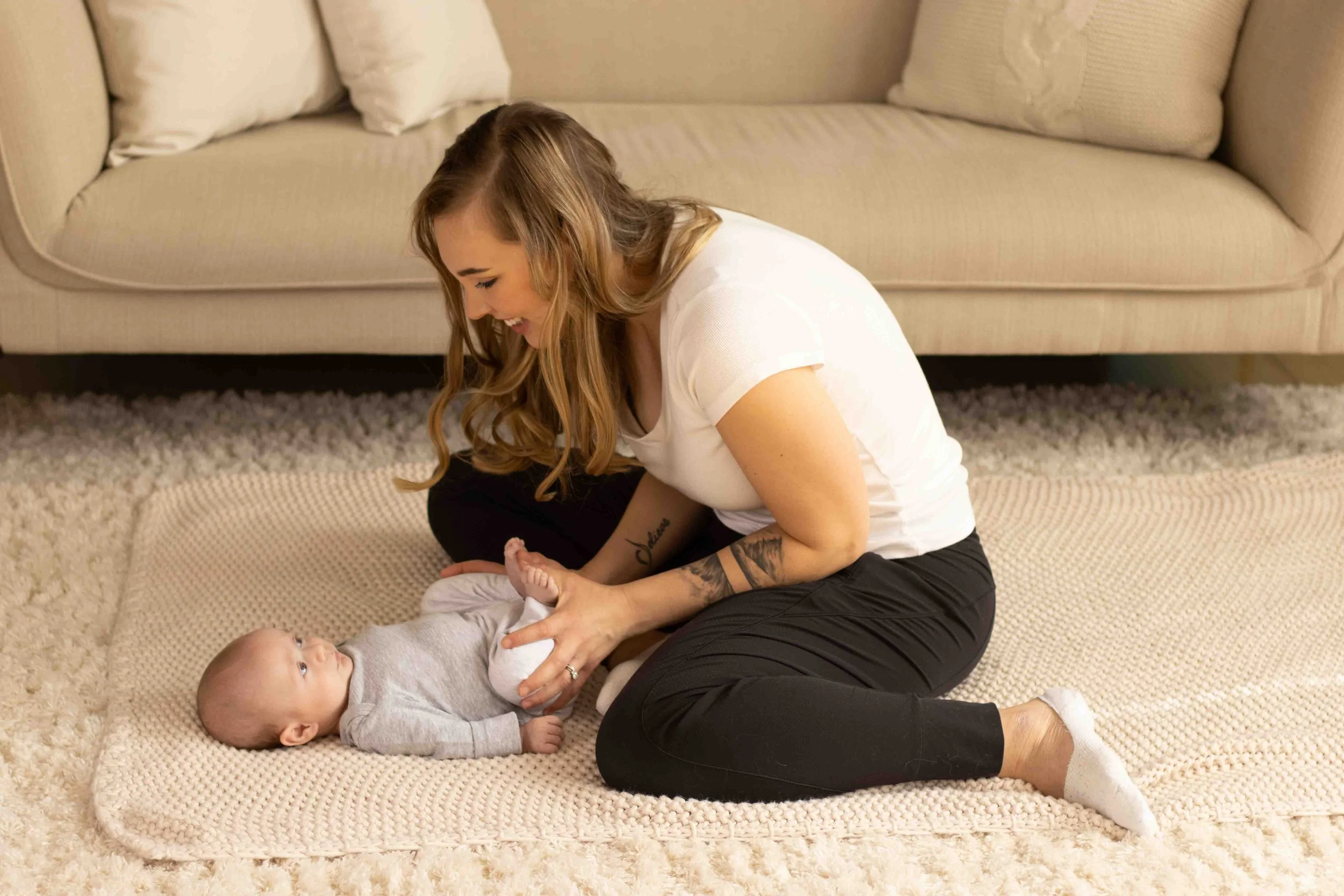5 Gentle, Natural Ways to Relieve Baby Gas (Without Medication)
By Dr. Alli Chisholm, PT, DPT
Disclaimer: This post may contain affiliate links. If you purchase through my links, I may earn a small commission at no extra cost to you. I only recommend products I personally use and love with my own family and clients.
It was 2 a.m. And yet again, I was waking up to my infant screaming.
We tried everything — diaper change, bottle, rocking, soothing — but nothing seemed to help. We even tried switching bottles, but ended up sticking with our tried and true Dr. Brown’s Anti-Colic Bottles, since these tend to help the best with decreasing air intake (although, trust me, I know how annoying it can be to clean all the pieces).
Those nights with our second child were some of the hardest of our lives. We’d be up for hours trying to calm her tiny body, desperate to relieve the gas and discomfort that seemed to take over her whole system.
Even as a pediatric physical therapist, I felt helpless. I knew what could be causing it — reflux, feeding mechanics, tension — but knowing didn’t make it any easier when I was in the thick of it.
Since then, I’ve learned a lot more about infant gas, colic, and constipation — and what truly helps when your baby seems uncomfortable. While every baby is unique and it’s always important to get to the root cause (especially if your baby is struggling to feed or seems in pain), these gentle, hands-on strategies can make a big difference in the moment.
1. Side-to-Side Rolling
Gentle movement can help your baby’s body work through trapped gas naturally. Start by laying your baby on their back on a soft surface (I personally LOVE this play mat for floor play), then gently hold their hands and legs together in a “happy baby” position. From here, slowly rock them from side to side.
This activity acts as a tension release activity, in addition to adding gentle rotational pressure to the abdomen that can assist with gas relief.
As a fun fact, if your baby is around 3-5 months old, they’re at a point where they could start intentionally rolling, which is another great way to naturally relieve gas due to the rotation of the trunk your baby is incorporating in this activity.
2. Supine Baby Buddha
This position is another favorite for gas relief and natural elimination. With your baby lying on their back, bring their knees gently toward their chest, then rotate them outward slightly (see the header photo of this post for an example, or click the link to see a video). Place your thumbs on the bottoms of their feet to provide grounding and support.
This movement helps relax the hips and abdominal muscles by mimicking a “Squatty Potty” position, allowing gas to pass more easily. It’s a great go-to after feeds or diaper changes when you notice your baby’s belly feels tight or they’re fussing with discomfort.
3. Standing Baby Buddha
Once your baby has developed more head and trunk control, this is a great variation above the above activity. Hold your baby upright against your chest, gently bringing their knees up and outward into a squatting position while supporting their feet with your hands.
This posture encourages natural elimination and helps the digestive system align for easier gas and bowel movement. It’s also a sweet bonding position — your baby feels your heartbeat and warmth while getting gentle physical relief.
4. Rainbow Massage
If you’ve ever tried the “I Love U” baby massage and felt confused about which way to move, this simplified version is easier to remember and just as effective.
Before starting the massage, apply some coconut oil to your fingertips to help your hands glide smoothly across your baby’s belly. Next, gently “draw” a rainbow on your baby’s belly with firm but gentle fingertip pressure. Begin at the lower right-hand side of their abdomen (your baby’s right), move up and under the rib cage, and then come down the left side.
This rhythmic pattern helps move gas through the intestines while calming the nervous system. You can even sing or hum softly as you do it — the combination of your touch and voice is deeply regulating for your baby.
5. Koala / Superman Hold
This is a game changer for babies who dislike tummy time or struggle with gas. Hold your baby by placing one forearm under their armpits, tucking them close to your body. Bring your hand through their legs so your hand applies gentle pressure on their belly.
This pressure, combined with the upright position and your body warmth, helps move gas bubbles and acts as a great calming tool to relax your baby’s body, in turn causing that discomfort to be released. This position also works wonderfully for babies who struggle with reflux.
Try walking around the room or gently bouncing — and be sure to switch arms each time you do this to support even neck and trunk development.
When to Seek Extra Help
If your baby’s gas or discomfort seems ongoing — especially if they cry for hours, arch their back, spit up excessively, or have trouble feeding or sleeping — it might be more than just “normal” baby gas.
And If you’re not sure whether your baby’s gas is related to feeding, head preference, or overall tension, you might find these helpful:
As a pediatric physical therapist, I often find that persistent gas or colic is related to deeper patterns like body tension, feeding mechanics, or muscle tightness. Through virtual infant wellness consults, I help parents identify what’s really going on and teach personalized, gentle strategies to help babies feel comfortable and thrive.
These sessions are done right from your home, making them stress-free and convenient. Together, we can address gas, reflux, colic, and other concerns while supporting your baby’s overall development.
👉 Schedule a Virtual Infant Wellness Consult to get individualized guidance and real-time support from an infant physical therapist trained in infant tension and digestive comfort.
Final Thoughts
You’re not alone in those sleepless nights. Gas and tummy discomfort can be a present factor in those first few months of life when your baby’s digestive system is still developing, but with simple, supportive techniques — and the right professional guidance if needed — your baby’s body can learn to find relief naturally.
You’re doing such a beautiful job tuning in to your baby’s needs and learning what helps. The small things truly add up — and your calm, loving presence is the best medicine there is.
What have you found helpful when it comes to resolving your baby’s uncomfortable gas? Let me know in the comments!

